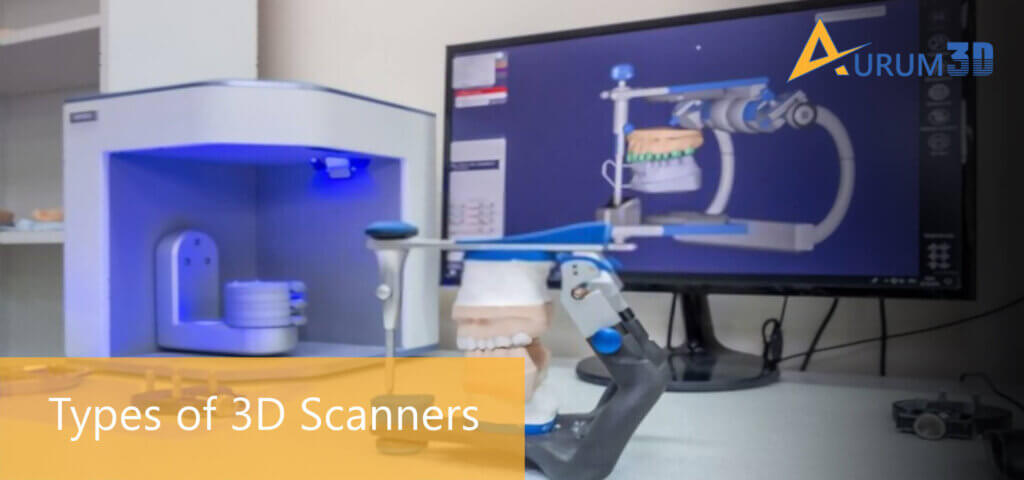3D printers produce solid three-dimensional objects and models from digital files. These digital files convey the surface of the solid model as a series of triangles using Standard Triangle Language (STL). The 3D artists produce these digital files using a variety of technologies, including 3D modeling and 3D scanning.
3D scanners help 3D printers to produce a three-dimensional object exactly and accurately by converting real-world objects into 3D models. They recreate the real-world object’s shape and appearance by collecting and capturing relevant data digitally.
According to Wikipedia,
“3D scanning is the process of analyzing a real-world object or environment to collect data on its shape and possibly its appearance (e.g. colour). The collected data can then be used to construct digital 3D models.”
The professional 3D printing service providers convert real-world objects into 3D models using a short-range, medium-range, or long-range 3D scanner. But each of these 3D scanners uses a specific 3D scanning technology. The 3D scanning technologies differ from each other in many aspects. Also, each 3D scanning technology has its own pros and cons.
Types of 3D Scanners: Comparing Widely Used 3D Scanners and 3D Scanning Technologies
Photogrammetry
This 3D scanning technology produces digital models by stitching multiple images of the same real-world object taken from various angles. The photogrammetric scanners use specialized software to stitch images taken using digital cameras, mobile devices, and camera drones. The software integrated images seamlessly and accurately by identifying pixels corresponding to the exact physical point.
Engineers these days use drone cameras to capture images of mountains, statues, buildings, and large structures. The photogrammetry scanning technology makes it easier for them to create digital models of these large structures by stitching the aerial photographs. Also, this category of 3D scanners helps 3D artists to scan animals and human beings without putting in extra time and effort.
Structured Light
This category of scanners produces 3D models by performing two important tasks simultaneously – casting geometric patterns onto the real-world object and taking photographs using a camera. While taking photographs, the camera captures or logs in deviations of every image. While producing 3D models, the 3D scanner determines the location of all existing points based on the displacement of patterns.
These 3D scanners replicate a real-world model digitally and accurately by scanning it continuously from various angles. Also, they use specialized software to create the 3D model accurately by stitching these scanned images. The use of structured light makes this 3D scanning technology deliver extremely precise measurements. Also, structured light 3D printing technology is used widely by stationary and portable 3D scanners.
Time of Flight (TOF)
The 3D scanners developed using time-of-flight (TOF) technology captures detailed information about a three-dimensional object using a range imaging camera system. The range imaging camera system resolves the distance between the camera and the real-world object using TOF technology. TOF technology makes the scanner measure the amount of time the infrared light or laser beam takes to reflect back.
This type of 3D scanners is developed with highly accurate sensors. But they still fail to deliver precise measurements as the speed of light is impacted directly by a slew of factors, including temperature and humidity. That is why; engineers often opt for TOF 3D scanning technology while creating 3D models of large structures and objects. However, the 3D scanning technology is effective in capturing images of an object in real-time by tracking movements seamlessly.
Laser Scanning (Triangulation)
Laser scanning is often considered to be more versatile than other 3D scanning technologies. As the name indicates, this category of 3D printers projects or delivers laser beams onto the surface of the real-world object. The laser beam returns back to the sensor after being reflected. The 3D scanner gathers and interprets the geometric information based on the time gap between projection and reflection. The scanner uses a camera to record where the laser beam intersects with the object.
The angles of the camera and the laser beam make the scanner identify the exact location where the laser dot hits the object. In addition to scanning objects, laser scanning technology measures distances accurately and precisely. But the 3D scanning technology is considered to be less precise than structured light scanning. Also, it is used primarily by larger 3D scanners to scan large objects like buildings and cars.
Computerized Tomography (CT)
This 3D scanning technology scans both internal geometry and external parts of a real-world object. The scanner using CT technology uses x-ray to capture a series of 2D images of various sections of the object. Also, they form 3D models by superimposing the photographs in a way that they appear layered. CT scanning technology is currently used widely in the medicine and healthcare industry in the form of CT scan or CAT scan.
Many hospitals use this category as 3D scanners as a diagnostic method to capture images of the interior of the human body. Despite capturing high-resolution 2D images, CT is more expensive than other 3D scanning technologies. Also, the technology is currently used mostly in very large 3D scanners. The CT scanners can be operated and handled efficiently only by trained x-ray technicians.
Contact
As the name suggests, this type of 3D scanner produces 3D models digitally by contacting or touching the real-world object physically. The 3D engineers need to ensure that the object to be scanned is held in place firmly before starting the scanning process. The accuracy of the contact-based 3D scanning process depends on a slew of factors – timing, movement, and vibration.
Also, contact 3D scanners often alter or deform the object while creating 3D models. Engineers have to make alterations to ensure accuracy and precision. That is why; contact scanners are used primarily for quality control purposes. The engineers do not use this type of 3D scanner for the conservation of objects.
While 3D-printing an item, engineers transform real-world objects into 3D models using several types of 3D scanners. But no engineer can use a single 3D printer to create digital versions of multiple real-world objects. Experienced engineers always evaluate the pros and cons to choose the most appropriate 3D scanning technology for individual projects.

